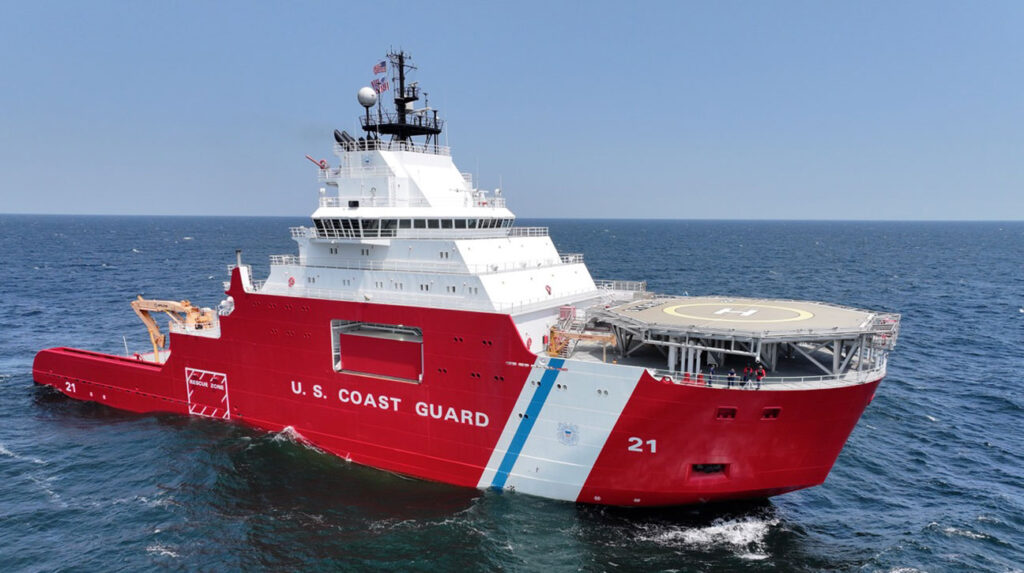The United States Coast Guard welcomed its third polar icebreaker into its fleet as the Storis left Pascagoula, Mississippi, in June 2025 on its initial voyage. The cutter will be homeported in Juneau, Alaska, and used for Arctic patrol duty and other tasks. U.S. COAST GUARD
A former civilian icebreaker is being repurposed to bolster the United States Coast Guard’s Arctic icebreaking capabilities, strengthening U.S. presence, force projection and patrol abilities in often frozen seas. The Coast Guard cutter Storis, renamed after a famous icebreaker based in Alaska, will be berthed in Juneau and manned by a mixed crew of military Guardsmen and civilians. Departing on its maiden voyage in June 2025, the Storis is an example of reformed Coast Guard acquisition processes and will fill a needed role while polar security cutters are being built. “(The) Storis’ departure marks an early milestone in the Service’s transformation through Force Design 2028 (FD2028), which includes reforming Coast Guard acquisitions to rapidly deploy capabilities to execute the Coast Guard’s missions,” a Coast Guard news release stated.
The country’s first new polar icebreaker acquired in 25 years, the Storis will patrol the Arctic from its temporary home in Seattle, Washington, while infrastructure improvements are being made in Juneau. The ship’s commander is Capt. Keith M. Ropella, former chief of cutter forces at Coast Guard Headquarters in Washington, D.C. Ropella previously commanded Coast Guard cutter Polar Star from July 2022 to July 2024.
The Storis was acquired from a private company in December 2024 by congressional appropriation and renamed after modifications to enhance communication and add defensive firepower. “The vessel will expand U.S. operational presence in the Arctic and support Coast Guard missions while the service awaits the delivery of the Polar Security Cutter (PSC) class. The Coast Guard will continue evaluating the cutter’s condition and requirements to achieve full operational capability,” the release stated.
The Coast Guard said it needs eight or nine icebreakers to adequately defend the Arctic. More recently, the U.S. government said it intends to acquire at least 40 new icebreakers. The Coast Guard is upgrading its existing fleet as well, which has only one operational icebreaker, the Healy. In all, the Coast Guard’s inventory includes three polar icebreakers, 21 domestic icebreakers and 16 ice-capable buoy tenders. “As the United States’ third polar icebreaker, Storis will provide near-term operational presence and support national security as a bridging strategy until the full complement of PSCs is delivered,” the release stated.
Canada, Finland and the U.S. announced a partnership dubbed the Icebreaker Collaboration Effort (ICE Pact) to produce icebreakers for use in rapidly melting Arctic waters. The July 2024 pact was revealed during the NATO summit in Washington, D.C. and was framed to boost shipbuilding capacity in each country. The agreement is also widely seen as a counter to the Chinese Communist Party and Russia, which possess icebreaker fleets and production capabilities that have drawn attention in the West.
The original Storis, known as the “Galloping Ghost of the Alaskan Coast,” had a storied history with 64 years of icebreaking operations in Alaska and the Arctic before being decommissioned in 2007, the release stated.

